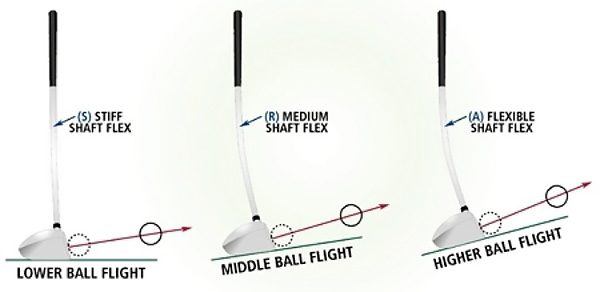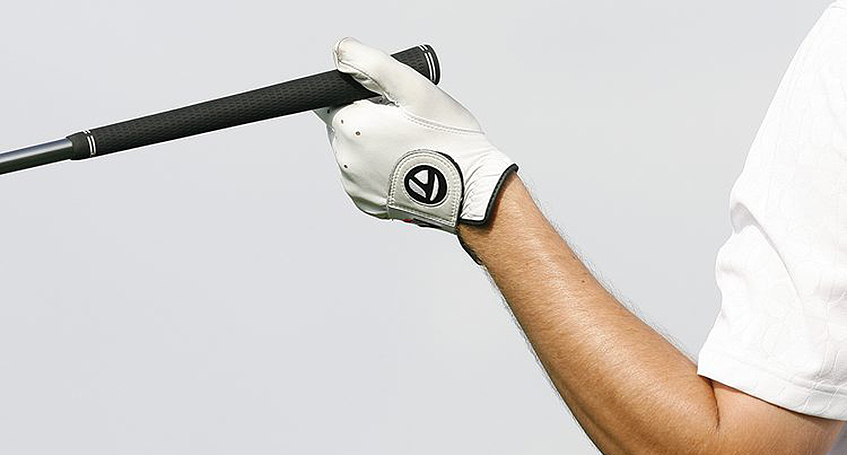Golf Shafts – Fitting and Flex Explained

Driver Shaft Flex During Swing, image: phuquocislandgolf.com
One of the most common things heard from touring professionals about the mistakes they see amateurs making is that the average golfers are not playing the right golf clubs for their games. When pros make this comment what they are usually referring to is golf shafts. There is a reason that golf shafts are referred to as “the engine of the golf club.” The best way to make that engine purr is to maximize the power waiting to be unleashed in the shaft.
For the first 400 years of its history, golf was played with wooden shafts that were fabricated from hardwoods like hickory and maple. These clubs tended to flex a great deal in the golf swing and the harder the swing the more the club flexed. This made it extremely difficult to consistently return the clubhead square to the ball. With the coming of steel shafts in the early 1900s and graphite shafts in the late 1900s, it became possible for manufacturers to build tubes with varying degrees of thickness which created different amounts of flex in the golf shaft. Eventually, the industry settled on five measurements of flex in the golf shaft. Golfers will recognize these by their letter designations – L (Ladies), A (Seniors), R (Regular), S (Stiff), and X (Extra Stiff).

Stiff, Regular, and Senior Shaft Flexes, image: golferhill.com
What amount of shaft flex is right for you?
The quickest way to match a shaft flex to your game is with clubhead speed. The faster the golf swing the more the club wants to flex or bend. For optimal control, faster swings require stiffer clubs. Players looking for more distance should seek out shafts with more flex. You can also gauge the amount of flex your shafts require by observing the ball flight of your shots. If you consistently hang the ball out to the right (for right-handed swingers), there is a chance that your shafts are too stiff. If your game consists of pulled and hook shots, your shafts may have too much whip in the shaft.
This is where pros notice the mismatch between the clubs and the games of their amateur playing partners. Male golfers like to play the equipment the pros play, but unless they swing in excess of 100 miles per hour (and few players do with accuracy and consistency), those stiff and extra-stiff shafts are doing their game a disservice. Instead of marketing golf shaft by swing speed, companies have labeled shafts for “ladies” and “seniors,” but these more flexible shafts are the ones many men golfers should be using.
The industry has no precise measurement standards to determine the amount of flex in a golf shaft, so each manufacturer produces shafts with a different amount of action. The conundrum for the golfing consumer is to decipher each company’s shaft profile. One company’s stiff (S) shaft could be another’s regular (R). The only way to fine-tune the golfing engine to your game is to visit a trained club fitter with a launch monitor. This will create a bend profile for each club in your bag to outfit your game with the ideal shaft.
Golf Shaft Fitting
What is the club fitter looking for with a bend profile? During the golf swing, each shaft will bend at a different point in the swing, storing up the energy to deliver back to the ball. The creation of this torque is known around the driving range as loading and unloading the club. When the shaft straightens before impact, the stored energy releases and the clubhead speeds up to deliver maximum power. The holy grail of the bend profile is finding that point in the golf swing where the most force can be applied to the shot which is commonly called the kickpoint.
Kickpoints are especially useful in determining ball flight. A low kickpoint (maximum bend on the lower end of the shaft) delivers a higher launch angle, and a higher kickpoint (more bend in the shaft near the grip) produces lower flying shots. If you have taken thoughtful lessons and spent too many hours on the driving range honing your game and you are still producing shots that fly too high or too low, the problem may simply trace back to the kickpoint in your shafts.
The kickpoint identifies the moment of greatest bend in the shaft, but a complete bend profile will identify the different amounts the shaft torques along the entirety of the swing path. When you leave a club fitter with bend profile in hand, you will know exactly how your “golf engine” performs from its tip inside the hosel to the grip in your hands.
Flex is important. So be sure to get fitted for the correct flex to shave strokes and improve your game.



